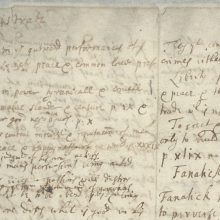
Photo from archive.org
decrees and synods of Christian councils, to anthropological accounts of Russian peasant religion. The breadth of this collection is amplified by an online resource facilitated by Yale University Press, which… Click to show full abstract
decrees and synods of Christian councils, to anthropological accounts of Russian peasant religion. The breadth of this collection is amplified by an online resource facilitated by Yale University Press, which offers over 1,300 pages of additional primary sources (the book itself is helpful in directing students and teachers to specific sections of this digital supplement). Particularly commendable are the accounts of the long and complicated schism between the Greek and Latin churches; Geffert and Stavrou paint a masterful picture of the ambiguities of the long process of this alienation, and the primary sources they have chosen represent the complex and woeful ironies of such a historical conundrum well. In addition, their treatment of the state of the Greek Church under Ottoman rule and the rise of the Greek independence movement provides an “eastern” counterbalance to many standard accounts of the shaping of modern Europe. Though historians specializing in a given period may find a detail to quibble with here or there, Eastern Orthodox Christianity is a great step forward. It will serve well in undergraduate courses, introducing this audience to the historical significance of the Eastern Orthodox Church, a church whose own contemporary course can appear both ancient and modern.
Journal Title: Church History
Year Published: 2017
Link to full text (if available)
Share on Social Media: Sign Up to like & get
recommendations!